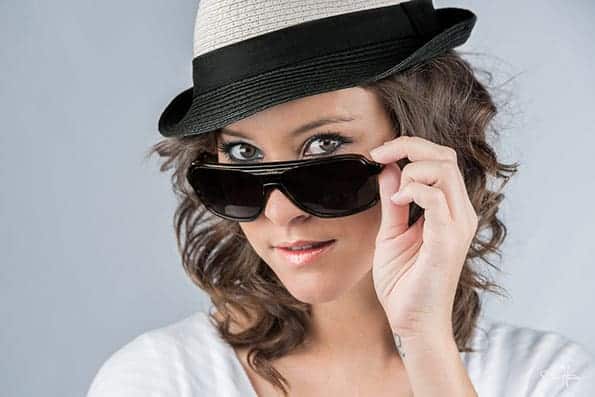So you already know that the rule of thirds, leading lines, and framing your photo are some of the basic photography composition techniques photographers commonly use. Here are a few other not so common composition techniques that can set your photos apart from the rest!

Left to Right
Put the focus point of your subject more to the right side rather than the left. Our eyes are used to reading text left to right, just like you are reading this article, so follow the same idea in your photos. No, this is not the rule of thirds or leading lines; rather, it draws your viewer's eye in to the photo.
Try this little exercise to see what I mean: Take one of your photos that has the focus point on the left and use some photo editing software to flip it over. See any difference? In the photo with the left focus point, you look at the subject and then quit looking. But in the one with the right focus point, you automatically look across the entire photo. Same photo, different result.
Obviously you wouldn't want to apply this rule blindly, but in some situations I have found it to make the composition just slightly more interesting.

Tell a Story
A picture is worth a thousand words, right? Think about that every time you take a shot. Does that sunset photo show a pretty sunset or does it show a feeling of calm and peace at the end of the day? What story are you trying to make people see and feel when they see your photo? Don’t forget to tell the story next time you press the shutter button.
Telling a story with your composition is nothing new. You have probably heard that before; however, one thing that I consistently see results from in my photography is paying more attention to what is excluded from the photo than what is included in the photo. The key to composition is to analyze every single thing in the photo, and then place it in a way that adds to the subject itself.
In the image above, there was a lake in front of the cabin that I thought should be part of the photo. I included it in the original photo taken on location, but once I got home and looked at the photos on the computer, I wonder if it's better cropped to only the top-right of the photo. Do you like the cropped version or the uncropped version?
Simplify Your Compositions
Keep the focus on the subject, not all the details in the scene. Too many details take the focus away from the story your photo is trying to tell and make it more difficult for the viewer to figure out what you are trying to convey. The building behind the family is not part of the family… so don’t put it in the photo (unless it has a great pattern, enhances the photo, or makes a good backdrop)!
Another way to bring focus to your subject is with light. The eye is naturally drawn to the brightest spot of a photo By using light, positioning, and depth-of-field to make the viewer pay closer attention to the subject, you will capture much more impactful photos.

Odd vs. Even
Odd numbers of things tend to be more visually exciting than even amounts. Because of this, triangles are more dynamic than squares (which often look like a frame). Three's the magic number rather than two or four. Choose seven over six or eight, and nine over ten… You get the idea.
This composition trick works really well when posing groups. Group photos have a tendency to include lines of people: front row, middle row, and then tall people in the back row. That makes for a very dull composition. If you group up the people into a triangle, you can have any even number of people and create a much more dynamic composition.
I recognize there are times that the old giant line photo may work best for very large groups, but when you have a small group, try the triangle composition for more interest.

Crop with Care
I don't go crazy about exactly where a crop on a person is “supposed” to be, but I do think it is important to crop with care. My rule of thumb is if you are going to crop off part of the body, crop hard. Cut off a good chunk. The real problem happens when you just barely cut off a skiff of the person's head or cut off half the hand, etc.
For example; if the photo is a full length shot of a man with no feet or just one foot, the man will look odd and the viewer's eye goes right to the missing feet rather than his eyes.
Again, don't be afraid to cut off part of the body, but remember to do so with care.

Break the rules!
Don’t be afraid to break the rules and try something new. There are times when breaking the rules is precisely what makes a photo stand out from all the rest.
Want to know even more about how you can get that epic composition in less time? Check out Jim's Block Method Composition Training!

Comments are closed.